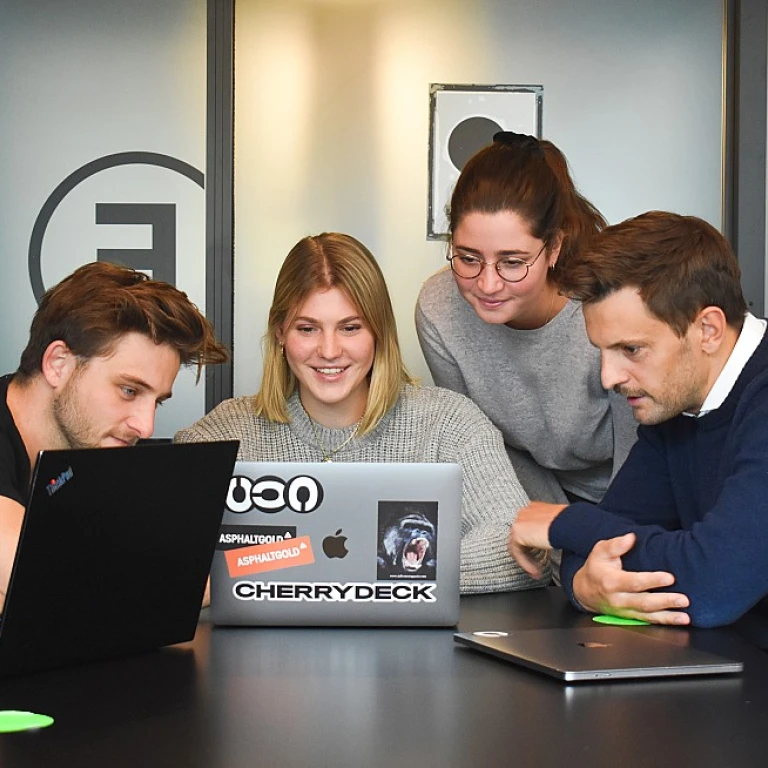The Basics of SystemVerilog Strobe
Key Elements of SystemVerilog Strobe
SystemVerilog strobe is an essential component in the verification and simulation of hardware design. Understanding its basics is crucial for anyone looking to excel in the field. At its core, strobe is a system task used to display data at specific points in time. Unlike regular print tasks, the strobe function waits for the end of the time step to record values, ensuring that the most accurate and stable data is captured. This capability is particularly useful in a design's active region, where precise timing is crucial.
The strobe task operates similarly to a display task when examining how it outputs data to the console or a file. However, its unique feature is that it occurs at the end of the time cycle, providing a snapshot of the system's state just before moving to the next cycle. With a focus on verification, this task is indispensable for validating simulation behavior and can be customized with format specifiers to suit specific needs, such as time display or a strobe display.
When employing the strobe task, it’s important to be aware of the time monitor aspect, which allows users to observe the progression of simulation time. This can be particularly powerful when paired with tcl scripts or other automation tools to monitor and log outputs effectively. Moreover, choosing the right file type and ensuring proper newline characters are used can facilitate clear and readable outputs. These foundational aspects form the bedrock upon which more advanced understanding of SystemVerilog strobe is built, and tackling these basics paves the way for overcoming challenges in more complex designs, which are further discussed in other sections of this blog.
For those eager to delve deeper and continually enhance their mastery, embracing a culture of continuous improvement through learning strategies is vital. This mindset not only aids in understanding the current task at hand but also prepares individuals to adapt to future advancements in the field.
Why Continuous Learning is Essential for SystemVerilog
The Imperative of Ongoing Learning in SystemVerilog Mastery
Continuous learning is crucial when dealing with languages as intricate as SystemVerilog. The field of digital design and verification is ever-evolving, and staying current requires more than just an initial understanding of the basics. Embracing continuous learning ensures that professionals remain adaptable in this dynamic environment. As SystemVerilog continues to evolve, new tools, methodologies, and best practices are introduced, including various system tasks like display and write. Regular learning helps users to adapt to changes in simulation and verification techniques, whether it's tweaking code to achieve more efficient strobe time or utilizing format specifiers for improved display of simulation values. A commitment to continuous learning allows individuals to better navigate challenges that arise during simulation time. Understanding how to effectively use time strobe or format display can make a significant difference in design and verification efficiency. With the advent of new technologies and updates in SystemVerilog, consistent learning helps users to effectively monitor time steps and operate within the active region, ensuring their skills stay relevant. Furthermore, by engaging with continuous learning opportunities, such as microlearning sessions, individuals can enhance their proficiency in tackling tasks, from understanding time monitor capabilities to mastering newline character integration in their SystemVerilog projects. Keeping up-to-date with advances ensures that one's ability to handle various file types and customize verification processes remains sharp, ultimately boosting both personal and organizational growth. For more on how microlearning can accelerate your SystemVerilog expertise, consider exploring how it’s boosting growth with microlearning.Challenges in Mastering SystemVerilog Strobe
Overcoming Hurdles in SystemVerilog Strobe Mastery
Embarking on the journey to master SystemVerilog strobe and its many intricacies can be quite challenging. The stakes are high given the language's pervasive role in hardware design verification. SystemVerilog offers a plethora of features aimed at enabling efficient simulation and debugging, such as the display and strobe functionalities. However, the complexity of utilizing these features correctly and effectively often requires significant learning effort.
Firstly, deciphering the format specifiers associated with strobe tasks is critical. As these specifiers determine how data is presented during simulation, a deep understanding is imperative. Moreover, mastering the nuances of varying file types and system tasks in SystemVerilog can be vastly different compared to basic Verilog, adding layers of complexity to the learning curve.
Another substantial hurdle is managing simulation time. The concept of strobe time and how the active region impacts value monitoring can become overwhelming without continuous practice. SystemVerilog's display and monitor capabilities provide current time snapshots, but understanding how these tasks operate within the time step framework is often tougher than expected.
Additionally, adapting to SystemVerilog's ever-evolving system pushes learners to continually update their skills. Hence, enhancing skills through updated online resources is essential. This dynamic aspect of learning presents an ongoing challenge but also an opportunity for growth in SystemVerilog expertise.
Finally, leveraging custom verification code effectively requires meticulous attention to detail in terms of syntax and performance. It can be daunting to integrate TCL scripts with SystemVerilog to automate simulation log files and task scheduling. Thus, consistent practice and engaging with community resources often help overcome these educational barriers.
Despite these challenges, mastering SystemVerilog strobe is ultimately rewarding. As technology progresses and integration with continuous learning platforms grows, more resources are becoming available to ease these obstacles for learners devoted to advancing their expertise.
Resources for Continuous Learning in SystemVerilog
Available Tools and Materials for Learning SystemVerilog Strobe
Continuous learning in SystemVerilog, particularly in mastering the strobe functionalities, requires access to a variety of tools and materials. Understanding these resources can significantly enhance your expertise and ensure you are utilizing the best strategies for your learning journey.
- Documentation and Manuals: The SystemVerilog standard provides comprehensive documentation and manuals covering strobe operations, including system tasks and specific format specifiers. Keeping these documents handy can aid in understanding complex simulations and design tasks.
- Online Courses and Tutorials: Several learning platforms offer in-depth courses on SystemVerilog, focusing on verification and simulation time management. These resources often include practical examples and code-based tasks to enhance your hands-on experience.
- Simulation Tools: Tools like ModelSim, Questa, and VCS are crucial for testing and verifying your strobe tasks. These platforms support multiple file types and provide real-time display and monitor capabilities, allowing you to track strobe time and observe how values change over active regions.
- Community Forums and Discussion Groups: Engaging with online communities can provide insights from seasoned professionals. Forums often discuss the intricacies of formatting display and display write operations, offering practical advice and solutions to common challenges.
- Reference Books: Several authoritative books delve into SystemVerilog code design and custom verification strategies. These texts often provide examples of display strobe and strobe display usage within design logs, offering clarity on implementing these in real projects.
Utilizing a combination of these resources ensures that learners stay updated with the latest trends and information in the industry. Whether you're focusing on mastering monitor time tasks or adapting to new tcl system tasks, these resources form the backbone of effective continuous learning.
Practical Applications of SystemVerilog Strobe
Applying SystemVerilog Strobe in Real World Scenarios
Understanding the practical applications of SystemVerilog strobe is essential for anyone diving into this simulation tool. It's not just about grasping the theoretical aspects; it's about translating those concepts into real-world usage. Here's how SystemVerilog strobe fits into actual scenarios:
- Simulation and Debugging: In the dynamic world of digital design, simulation is a critical aspect. SystemVerilog strobe plays a pivotal role when verifying and debugging complex systems. Using specific format specifiers for display and write tasks, you can obtain a detailed time-stamped log of events. Observing current time outputs directly from the active region aids in pinpoint accuracy during simulation.
- Time Management: Monitoring simulation time using strobe provides insights into critical time-dependent behavior. The time strobe helps in setting precise time step references, facilitating accurate design adjustments.
- Design and Verification: In design processes, maintaining a record using strobe helps capture the strobe display of specified parameters. This log becomes invaluable during verification stages, ensuring all design specifications are met consistently.
- File Operations: With the capability to display and write directly to different file types, you can record vital data for reviewing past simulations or for sharing with team members. Storing these outputs with newline character separation in organized log files enhances clarity and data extraction.
- Customization: The adaptability of SystemVerilog allows for custom formats in the display of real and integer values. You can customize monitor time outputs depending on the project's needs, ensuring that your data representation is always pertinent.
- Advanced Monitoring: For comprehensive oversight, especially during time display tasks, advanced monitoring options utilizing SystemVerilog's strobe can track performance and functionality across all design parameters.
By strategically applying these systemverilog strobe principles, engineers and designers can enhance their workflows, leading to more accurate designs and effective project outcomes. As technology evolves, these techniques will form the foundation for more robust system designs.
Future Trends in SystemVerilog and Continuous Learning
Future Prospects in SystemVerilog and Continuous Advancements
The advancement of SystemVerilog is on an upward trend with significant possibilities tied to future improvements in technology. Ensuring continuous learning will play a pivotal role in adapting to these advancements.- Enhanced System Tasks and Functionalities: As the capabilities of simulation tools evolve, so does the need for more sophisticated system tasks. For instance, using tasks like the display strobe to monitor time steps and simulation time will continue to grow in importance. Keeping up with these changes requires continuous acquisition of new skills.
- Integration of Advanced Verification Techniques: Verification processes are becoming more complex and vital. Applying techniques using custom format specifiers to manage log files and efficiently display real values can enhance design verification. This emphasizes the need for sustained learning to master such tasks.
- Focus on Design and Simulation Efficiency: The push towards optimizing design and simulation performance will undoubtedly lead to more advanced use of SystemVerilog features like strobe times and active regions. Understanding these concepts through ongoing education is critical to meet industry demands.








